Essential Roller Skate Safety Gear Guide
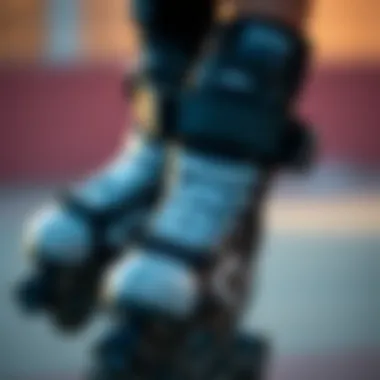
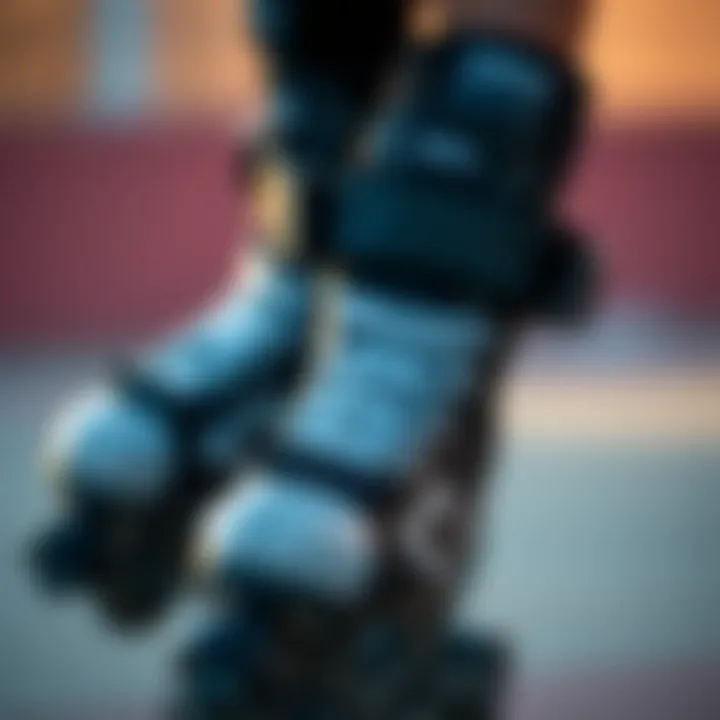
Intro
Diving into the world of roller skating can be an exhilarating experience. However, like any sport, it comes with its share of risks. Understanding the importance of safety equipment isn't just a precaution; it’s a necessity for ensuring a positive and secure skating journey. Not only can the right gear prevent injuries, but it can also boost your confidence on wheels.
So, what’s on the table when it comes to roller skate safety gear? This guide is aimed at skaters of all levels, whether you're a seasoned pro or just rolling out for the first time. We'll break down essential safety equipment, explore proper fitting techniques, and even touch on gear maintenance tips to keep everything in tip-top shape. In the end, our goal is to nurture a safety culture that informs, protects, and enriches the roller skating community.
It’s essential to know that each piece of safety gear plays a significant role. It's not merely about looking good; it's about staying safe while you glide or leap through the local park. So, let’s lace up those skates and explore what you need!
Understanding the Importance of Safety Equipment
When it comes to roller skating, safety should never take a back seat to thrills and fun. Roller skating can be a vibrant activity, offering both enjoyment and exercise, but it also poses certain risks. Understanding why safety equipment is crucial can not only safeguard individuals but can also foster a culture of awareness within the broader skating community.
The Risks Associated with Roller Skating
Every time a skater laces up and hits the pavement, they expose themselves to several potential hazards. Falls, collisions, and misuse of the gear can lead to injuries ranging from minor scrapes to serious fractures. The likelihood of accidents increases, especially among inexperienced skaters who might not yet have mastered the art of balance and control.
Some common risks include:
- Loss of Balance: Many new skaters underestimate their ability to stay upright. Unexpected maneuvers can easily lead to falls.
- Collisions: Whether it's another skater or an obstacle on the skating surface, collisions can happen in an instant.
- Environmental Factors: Uneven surfaces, debris, or wet conditions can catch anyone off guard, increasing the risk of accidents.
- Equipment Failure: Worn wheels or brakes that don't function properly can lead to sudden stops or uncontrolled rolling.
It's undeniable that roller skating carries its own set of challenges, so equipping oneself with proper safety gear transforms these uncertainties into manageable risks.
How Safety Equipment Reduces Risk
One cannot simply brush off the significance of having proper safety gear. Investing in quality protective equipment can significantly decrease the severity of injuries should a mishap occur.
Let's dive into how different types of gear function:
- Helmets: Often referred to as the crown jewel of skating safety, helmets protect the skull during falls. The right helmet absorbs impact, minimizing the chance of concussion.
- Knee Pads: These handy companions cushion the knees against hard surfaces, reducing scrapes and protecting the joints from impact during falls.
- Elbow Pads: Like knee pads, elbow pads protect these crucial joints, making it easier to break a fall without serious injury.
- Wrist Guards: Designed to prevent wrist fractures, they absorb shock and keep the wrist in a neutral position—vital during falls.
Investing in proper safety gear not only protects the skater but also sets an example for others, encouraging a culture of safety.
Having the right equipment not only reduces the immediate risk of injury but strengthens confidence as skaters grow in skill. This empowerment fosters a keener sense of awareness on the rink, allowing skaters to push their limits safely while enjoying every moment. Ultimately, being proactive about safety paves the road for an enriching roller skating experience.
Essential Protective Gear
The role of essential protective gear in roller skating cannot be overstated. Equipped skaters are those who glide with confidence, knowing they're shielded against the potential bumps and bruises that come with the territory. It’s not just about having gear; it’s about making informed choices that contribute to one’s safety and enjoyment on the rink or pavement. Having the right protective equipment can mean the difference between a fun day out and a trip to the emergency room.
Helmets: Your First Line of Defense
Types of Helmets
When it comes to helmets, not all are created equal. There are various types, such as skate helmets, multi-sport helmets, and full-face helmets. Skate helmets are designed with a focus on impact resistance, making them a popular choice among roller skaters. They offer thoughtful ventilation and a snug fit that help with comfort and safety during long skating sessions. Full-face helmets go a step further, protecting the chin and face, which can be a lifesaver in more extreme skating conditions.
Choosing the right helmet type can ensure your noggin stays safe, especially during those thrilling moments when you're trying something new.
Fitting a Helmet Correctly
A helmet is of little use if it’s not fitted properly. A helmet should sit level on your head, not tipped back or forward, and it should feel snug but comfortable. The chin strap should be adjusted to allow only a finger’s width between your chin and the strap, making sure it doesn’t move when you shake your head. Proper fitting increases the helmet's effectiveness, ensuring it doesn't shift in the event of a fall.
The unique aspect of getting the fit exactly right is that it maximizes both comfort and protection. If it's too loose, it might slip during a spill; too tight, and you might get headaches.
Caring for Your Helmet
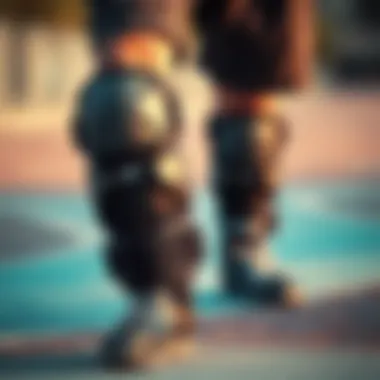
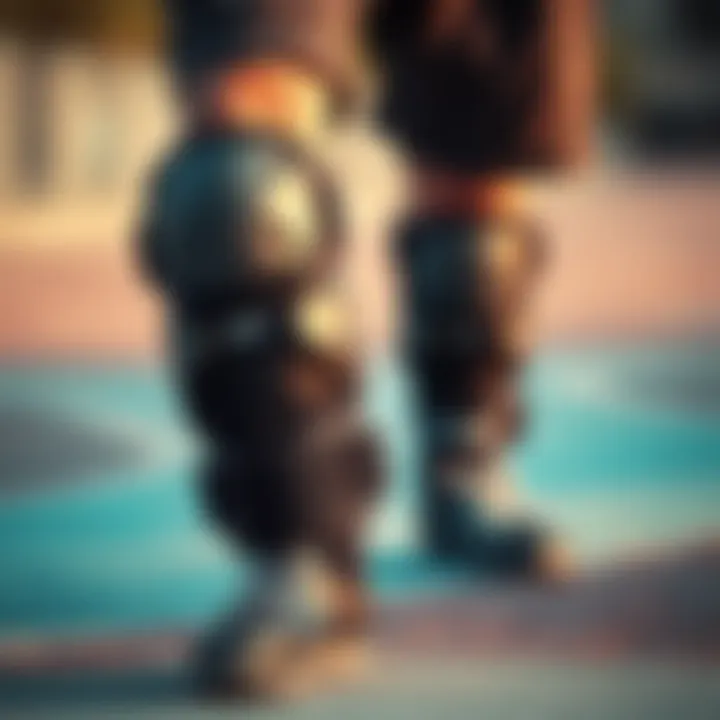
Keeping your helmet in top shape is essential. It's recommended to check it regularly for cracks or dents, especially after a fall. Regular cleanings with mild soap and warm water keeps it grime-free and prevents odors. Proper care can significantly extend a helmet's lifespan, making sure it retains its protective qualities.
Just remember, even the best helmet has an expiration date. Many manufacturers recommend replacing your helmet every three to five years, even if it looks fine.
Knee Pads: Safeguarding Your Joints
Materials and Design
Knee pads are often seen as a necessity; after all, our knees take the brunt of many spills. Knee pads come in a variety of materials, including foam, plastic, and even some with hard shells made of polycarbonate. A well-designed knee pad offers both cushioning and protection without being cumbersome.
The comfort of the knee pad is particularly crucial. Look for designs with breathable fabric and adjustable straps that prevent slipping. The choice of materials directly affects how well they can absorb shocks and protect your knees during falls.
Choosing the Right Size
When it comes to knee pads, sizing matters more than people might think. If they’re too big, they won’t stay in place, and if they're too small, they won't offer the protection you need. Most knee pads come with sizing charts that include measurements for thigh and calf circumference to help you find the right fit. Finding the right size ensures that the pads stay secure and effectively absorb impact during falls.
Maintenance Tips
Knee pads can get a bit grimy after a few outdoor sessions. Cleaning them is straightforward; usually, a damp cloth and mild soap will do the trick. Check the straps often too; if they start to fray, it could mean it's time for a replacement. Keeping them clean and inspecting for wear will ensure they remain effective during your roller skating adventures.
Elbow Pads: Protecting Your Arms
Varieties of Elbow Pads
Elbow pads are a key component of protective gear for skaters, with varieties catering to different styles and needs. Some pads have hard plastic casings while others are designed with a softer, more flexible foam. The main objective is to provide cushion during falls while allowing for a range of motion in the arms.
Softer pads may feel more comfortable for longer skating sessions, but they might not offer the same level of protection as their firmer counterparts. It’s about finding a balance that works for your skating style and preference.
How to Fit Elbow Pads
Just like knee pads, elbow pads need to be fitted snugly. They should cover the elbow joint while still allowing full arm movement. A well-fitted pad prevents elbow impact from getting too abrasive. Too tight can restrict circulation, while too loose allows movement, which might not protect your elbow properly. With the right fit, you should be able to wear them comfortably for longer periods without discomfort.
Cleaning Your Pads
Cleansing your elbow pads regularly is a must for maintaining hygiene. They can typically be wiped down or, in some cases, thrown in the washing machine, depending on the materials. Regular washing not only prevents odors but also extends the life of the pads, making them a wiser investment in the long run.
Wrist Guards: Preventing Injuries
Features of Effective Wrist Guards
Wrist guards are designed to shield the wrists from the impact that often occurs during falls. Good wrist guards have a hard outer shell and cushioning on the inside, providing both support and protection. They should also feature adjustable straps to ensure they fit snugly on your wrist without being overly tight.
A unique aspect of effective wrist guards is their ability to limit the amount of bending in the wrist during a fall, which reduces the risk of fractures or sprains.
Measuring for a Proper Fit
When measuring for wrist guards, you need to check both the circumference of your wrist and the length of your palm to ensure that they slide on easily without being baggy. Proper fitting leads to comfort and effectiveness, as the guards need to stay in place to provide the necessary support.
Durability and Care
Wrist guards endure a lot of wear and tear, so it’s critical to be vigilant about their condition. Inspect them regularly for any cracks or signs of stress, and replace them if they show significant wear. Keeping them clean and free of debris will further enhance their lifespan.
Regular checks after falls will help prevent long-term injuries even in daily use.


In summary, ensuring that you’re equipped with the right protective gear is paramount for any roller skater, whether you’re just starting or a seasoned pro. Safety should always be the priority, and investing in quality gear can pay dividends in the long run.
Choosing the Right Equipment
Selecting the right equipment is absolutely crucial for a safe and enjoyable roller skating experience. The quality and suitability of your gear can make all the difference, not only in terms of protection but also in boosting your confidence on skates. Each piece of equipment has its specific function and should align with your personal needs and skating style. Failing to choose the right items, whether due to poor fitting or lack of understanding, could lead to injuries that could sideline you for a considerable time. Thus, understanding how to match equipment with your skill level and budget is vital.
Assessing Your Skill Level
Beginners vs. Advanced Skaters
When you’re just starting out, the world of roller skating can feel overwhelming. As a beginner, your focus should be on finding gear that offers maximum protection and comfort. This means investing in equipment designed for more novice users, likely featuring better cushioning and more forgiving materials. These items allow skaters to learn and grow in a safer environment.
Conversely, advanced skaters often lean toward specialized and higher-performance gear. The need for lightweight materials or enhanced maneuverability becomes paramount. They might prioritize speed and agility, which changes the types of gear they opt for. While advanced gear can be more expensive, it usually provides unique features that cater to a more experienced skating style. Each choice in this regard can directly influence the skater’s comfort and performance during their sessions.
Specific Gear Recommendations
When assessing gear, it’s essential to look for beginner-friendly items like padded helmets and high-tops skates with ankle support. For example, the American Girl Safety Helmet is well-reviewed for young skaters just finding their footing. These types of items provide reassurance and security without breaking the bank.
For advanced skaters, moving towards features like the Riedell R3 Roller Skates can make a significant difference. Their design caters to improved performance. Advanced skaters might also invest in lighter materials that offer both comfort and support. However, this often comes at a higher price point, so weigh those benefits against your budget carefully.
Budget Considerations
Understanding Cost vs. Quality
The relationship between cost and quality can be quite intricate. It’s tempting to opt for cheaper options when you’re first getting into the sport. But these lower-cost items often lack durability and comfort. A high-price tag doesn’t always guarantee superior quality either. Instead, focus on the gear’s reputation, materials, and functionality. Investing in better quality upfront can often save in the long run, as low-quality gear may wear out quickly, needing replacement sooner than later.
Key characteristics to consider include user reviews and brand history. Many manufacturers may offer warranties, which can provide an added layer of reassurance regarding your purchase. Opting for quality can be beneficial not just for safety, but also for skater morale.
Where to Find Affordable Gear
Affordable gear isn’t hard to come by, if you’re looking in the right places. Second-hand shops or online marketplaces like eBay can sometimes yield hidden gems for significantly lower prices. Another excellent choice is local skate shops that often sell last season's models at discounted rates. Keep an eye out for seasonal sales or clearance items, as you can often pick up high-quality equipment without needing to fork out full price.
Sometimes, community forums on platforms like Reddit or Facebook Groups can direct you to great deals or even local sales. Additionally, talking to friends who skate might lead you to affordable sources for gear that they’ve had good experiences with. Finding quality gear at a low price can feel like striking gold in your skating journey.
Remember: The right equipment leads to safer and more enjoyable skating experiences.
Making informed decisions as you shop can empower you to invest in gear that matches your skating journey, ultimately allowing you to enjoy the sport without extra worry.
Proper Maintenance of Safety Equipment
When it comes to roller skating, the thrill can be matched only by the potential risks involved. Thus, the right maintenance of safety equipment becomes crucial. Proper maintenance not only ensures the longevity of your gear but also bolsters your safety as you glide along. Skaters who prioritize maintenance tend to enjoy their skates more, as their protective gear remains functional and reliable.
Inspection Routines
How to Spot Wear and Tear
Catching signs of wear before they turn into major issues is essential. Start by visually inspecting all parts of your gear. Look for cracks or fading on helmets, rips on pads, or loose straps. A helmet that doesn’t fit snugly anymore? That’s a red flag.
The main characteristic of a well-kept piece of equipment is its condition, which should promise safety. Regular checks can save you headaches—or worse. It’s all about peace of mind. Inspecting gear thoroughly helps in identifying problems early on. For instance, if your knee pads feel unusually loose or your wrist guards show significant scratches, it’s high time to consider replacements.
"Regular inspections not only help catch wear and tear but also keep skaters mindful of their equipment’s importance."
Frequency of Inspections
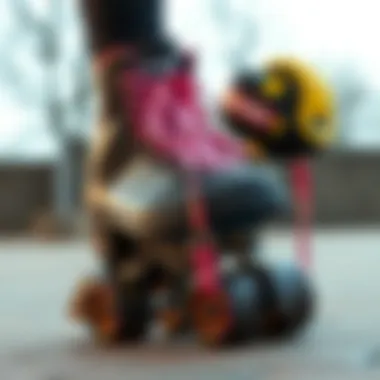
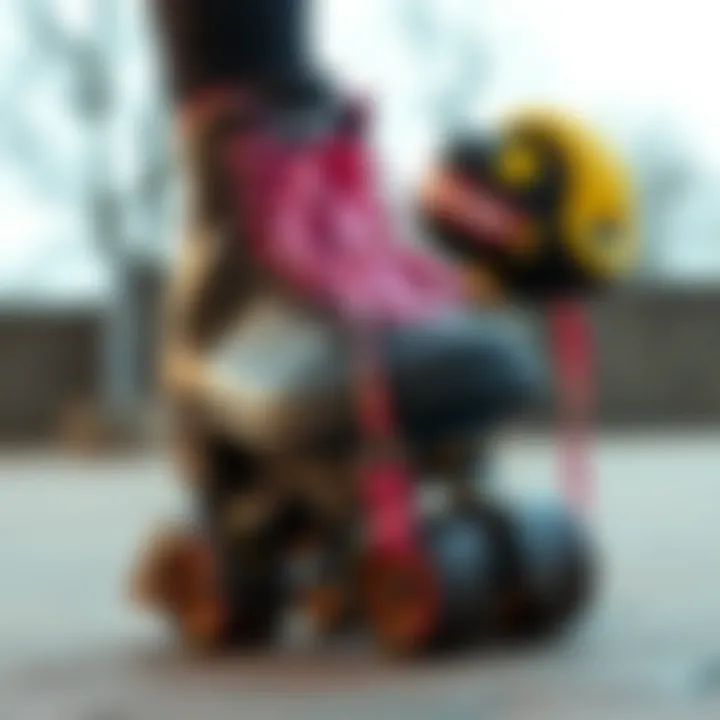
Determining how often you inspect your gear hinges on a few factors: how frequently you skate, the intensity of each session, and even the types of surfaces you're encountering. If you skate every day, reviewing your equipment weekly may be necessary. If it's more of a weekend hobby, monthly checks might suffice.
This regular upkeep is beneficial because it keeps the gear fresh and reduces the chance of injury. The unique angle here is that it also encourages a habit of responsibility in skaters. Regular inspections help build a stronger awareness of safety gear, ensuring your repair or replacement is never an afterthought but rather a norm in your skating experience.
Cleaning and Storing Your Gear
Best Practices for Cleaning
Cleaning your gear isn’t just for aesthetics; it helps maintain performance. A simple wash with mild soap and water can often do. Avoid harsh chemicals as they can ruin the materials over time. For knee and elbow pads, you might consider using a gentle scrub brush to remove dirt from the common wear areas. It’s smart to let them air dry rather than throwing them in the dryer.
By maintaining your gear's cleanliness, you're ensuring that it functions at its best. The unique feature here is that consistent cleaning enhances your comfort while skating. Who wants to slip in gritty elbow pads? Keep that gear spick and span.
Storing Tips to Extend Lifespan
Proper storage is just as important as cleaning. You should avoid stacking your helmets or elbow pads atop one another; this can deform or damage them. Instead, store them in a cool, dry place, preferably hanging. Make use of equipment bags that allow for airflow. This prevents mustiness and mildew.
An attractive characteristic of good storage habits is that they extend the equipment's lifespan. It's all about taking small, consistent steps to protect your investment—whether it’s an expensive helmet or a simple pair of knee pads. Think of it as giving your gear a cozy home—your skates will thank you for it!
In summary, thorough inspections, regular cleaning, and proper storage are key elements that contribute to the effectiveness of your roller skate safety equipment. Embracing these practices means enjoying safer and more enhanced skating experiences for a longer time.
Promoting Safety Culture in the Skating Community
Fostering a safety culture is paramount in roller skating, as it significantly enhances the enjoyment and longevity of the sport. Recognizing the importance of protective gear and responsible skating practices creates a community that prioritizes safety. This not only aids in preventing injuries but also promotes an atmosphere where skaters feel empowered to share best practices and seek advice. When skaters look out for one another, it builds camaraderie and reinforces the notion that skating is not just an individual pursuit but a community endeavor.
Encouraging Safe Practices Among Peers
One of the most effective ways to promote a culture of safety is through peer encouragement. When seasoned skaters take it upon themselves to share knowledge about proper techniques and the importance of gear, it fosters an environment where novices feel supported. Simple actions, like reminding a friend to wear a helmet or adjust their wrist guards, can go a long way. Moreover, if skaters openly discuss their experiences—both successes and near-misses—it creates an atmosphere of learning. Anecdotes about beginner falls or thinly veiled injuries can serve as cautionary tales that prompt others to think twice about their own safety measures.
This collective awareness ultimately also enhances the overall enjoyment of skating. By ensuring everyone is practicing safe habits, the fear of accidents decreases, allowing all skaters to focus on honing their skills rather than worrying about the potential hazards.
Organizing Safety Workshops
Topics to Cover
Organizing safety workshops can be a game-changer for any skating community. These workshops can touch on various key topics such as:
- Gear maintenance: Teach skaters how to inspect and maintain their equipment to ensure it functions correctly.
- Skating techniques: Offer demonstrations of techniques that reduce the risk of falls or collisions.
- First aid basics: Provide a basic understanding of how to manage minor injuries that may occur during skating.
The unique aspect of these workshops is that they cater not only to beginners but also seasoned skaters who may benefit from brushing up on techniques or discovering new gear. Workshops create a nexus for knowledge exchange, allowing participants to ask questions, share personal stories, and engage with expert insights. Furthermore, they can serve as a bridge that connects various skill levels, weaving a tighter fabric within the skating community.
Engaging Local Skaters
Engaging local skaters is essential for sustaining interest in safety workshops and community efforts. This can be done by utilizing local social media platforms, community bulletin boards, and skate parks—any venue where skaters already gather. Creating events that are both interactive and informative can stir interest. For instance, hosting friendly competitions where participants are judged not only on skill but also on safety practices can be entertaining and enlightening.
The key characteristic of engaging skaters is the element of inclusivity. Making all skaters feel welcome and encouraging them to participate can elevate community bonding. Using platforms like Facebook or local forums helps spread the word about workshops, while encouraging an ongoing dialogue about safety. Despite the potential disadvantages of varying interests within a diverse skating culture, a united front around safety can increasingly be the norm rather than the exception. When local skaters actively participate in fostering a safety culture, it can lead to a more conscientious community with greater respect for the sport and each other.
Closure
Safety in roller skating isn’t just a recommendation; it's a vital part of enjoying the sport to its fullest. As skaters glide along rinks or streets, they're often mesmerized by the rhythms of the wheels beneath them. However, this thrill comes with risks that should not be taken lightly. Acknowledging this, the conclusion of our guide has a few key takeaways that all skaters must consider.
First and foremost, equipping yourself with the right safety gear is foundational. Helmets, knee pads, elbow pads, and wrist guards each play a critical role in preventing injuries. While it may seem tempting to skimp on gear as a cost-saving measure, the long-term expense of medical bills and rehabilitation can far exceed the initial investment in quality equipment. When you put on a well-fitting helmet, for instance, you’re not just complying with safety norms. You’re making a conscious choice to protect your brain—the most vital organ for not only skating but for life itself.
"An ounce of prevention is worth a pound of cure."
Secondly, fostering a safety culture within the skating community is equally significant. It’s about spreading awareness and encouraging others to prioritize safety, thus creating a more protective environment for everyone involved. Organizing workshops or casual meetups discussing safety practices can significantly enhance communal knowledge and positively influence newer skaters, who might not be aware of necessary precautions.
Additionally, maintaining your gear cannot be overstated. Through regular inspections and proper care, skaters can prolong the life of their equipment. Routine checks can help spot wear and tear before it leads to more serious mishaps. Skating in late-night sessions can lead to equipment fatigue, so a diligent skater will always check their pads or wheels at the end of each session.
Ultimately, the journey of safety in skating is not a solitary one. It involves continuous learning, communicating, and sharing best practices. Each time you step onto your skates, remember that your choices affect not just yourself but everyone else in your skating community. Let's adopt a mindset that intertwines the joy of skating with the wisdom of safety, ensuring that every ride is not only smooth but secure.



